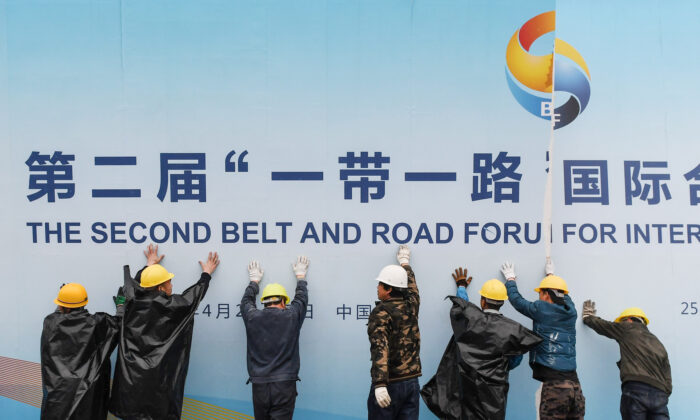BMW And Porsche In China: Market Headwinds And Strategic Adjustments

Table of Contents
Market Headwinds Facing BMW and Porsche in China
The Chinese automotive market, while still a significant growth engine, presents considerable challenges for even the most established luxury brands.
Intensifying Competition
The rise of domestic Chinese luxury brands like Hongqi and the high-end models from BYD represents a significant threat. These brands leverage advanced technology, competitive pricing, and a deep understanding of local preferences, directly challenging the dominance of established players. Furthermore, the continued strong presence of international competitors such as Mercedes-Benz and Audi intensifies the pressure on BMW and Porsche.
- Market share erosion: Established brands are witnessing a gradual decline in their market share due to increased competition.
- Pricing pressure: The need to remain competitive forces luxury brands to offer more competitive pricing strategies.
- Technological advancements from competitors: Rapid technological developments by domestic and international competitors necessitate continuous innovation to stay ahead.
Economic Slowdown and Shifting Consumer Preferences
China's economic fluctuations significantly impact luxury car sales. A slowing economy reduces consumer spending, particularly on discretionary items like luxury vehicles. Simultaneously, consumer preferences are shifting rapidly, with a growing preference for electric vehicles (EVs) and sustainable mobility solutions.
- Reduced consumer spending: Economic uncertainty leads to decreased consumer confidence and a reduction in luxury purchases.
- Preference for New Energy Vehicles (NEVs): The Chinese government's strong push for electric vehicles is driving consumer demand for NEVs.
- Changing demographics: The younger generation of Chinese consumers exhibits different purchasing behaviors and priorities compared to previous generations.
Supply Chain Disruptions and Geopolitical Factors
Global supply chain disruptions, exacerbated by geopolitical tensions, pose significant challenges to the automotive industry. Increased manufacturing costs, import tariffs, chip shortages, and logistical challenges directly impact the availability and pricing of vehicles, affecting profitability and consumer access.
- Increased manufacturing costs: Disrupted supply chains increase the cost of raw materials and components.
- Import tariffs and trade policies: Government regulations and trade policies can significantly increase the cost of importing vehicles.
- Chip shortages and logistical challenges: Global semiconductor shortages and logistical bottlenecks disrupt production schedules and vehicle deliveries.
Strategic Adjustments by BMW and Porsche in China
In response to these challenges, BMW and Porsche are undertaking significant strategic adjustments to maintain their competitiveness in the Chinese market.
Electrification and NEV Investments
Both brands are heavily investing in electric vehicle (EV) production and infrastructure in China. This includes launching new EV models specifically tailored for the Chinese market and developing advanced battery technologies. Partnerships with local charging infrastructure providers further enhance the EV ownership experience.
- New EV model launches: BMW and Porsche are aggressively introducing new EV models to cater to the growing demand.
- Battery technology advancements: Significant investments are being made to improve battery technology, increasing range and reducing charging time.
- Charging station partnerships: Collaborations with local charging network operators are expanding charging infrastructure accessibility.
Localization and Customization Strategies
Understanding and catering to the unique preferences of Chinese consumers is crucial. BMW and Porsche are adapting their products and marketing strategies accordingly. This includes offering tailored model features, localized marketing campaigns, and establishing partnerships with local suppliers to strengthen their supply chain resilience.
- Tailored model features: Vehicle features are adjusted to cater to the specific preferences and needs of the Chinese market.
- Localized marketing campaigns: Marketing strategies are adapted to resonate with the local culture and consumer preferences.
- Partnerships with local suppliers: Collaborating with local suppliers strengthens the supply chain and reduces dependence on global sources.
Digitalization and Enhanced Customer Experience
Leveraging digital technologies is essential for reaching and engaging Chinese consumers. BMW and Porsche are enhancing their online presence, utilizing online sales channels, mobile apps, and personalized service programs to improve the customer experience. Data-driven marketing strategies help target specific customer segments effectively.
- Online sales platforms: Establishing robust online sales channels provides convenient and accessible purchasing options.
- Mobile apps: Dedicated mobile applications offer customers a seamless and personalized experience.
- Personalized service programs: Customized services enhance customer loyalty and satisfaction.
- Data-driven marketing: Using data analytics enables targeted marketing campaigns to specific customer segments.
Future Outlook for BMW and Porsche in the Chinese Market
The long-term prospects of BMW and Porsche in China depend heavily on their ability to continue adapting to the evolving market dynamics. While intense competition and economic uncertainties remain challenges, their strategic investments in electrification, localization, and digitalization position them favorably. The potential for growth remains significant, particularly within the rapidly expanding NEV segment. However, continued innovation and responsiveness to changing consumer preferences will be crucial for sustaining success.
Conclusion: Sustaining Success: The Future of BMW and Porsche in China
The Chinese automotive market presents both significant opportunities and formidable challenges for BMW and Porsche. This article has highlighted the key headwinds – intensifying competition, economic fluctuations, and supply chain disruptions – and the strategic responses these brands are implementing. Their investments in electrification, localization, and digitalization are critical steps towards maintaining their competitive edge. The success of BMW and Porsche in China will continue to depend on their ability to adapt and innovate in this dynamic market. To stay informed about the evolving landscape of BMW and Porsche in China, follow industry news and further research areas like the impact of specific government policies and consumer behavior trends. Understanding these factors will provide a clearer picture of the future success of these iconic brands in the world's largest automotive market.

Featured Posts
-
 Why Florida A Cnn Anchor Reveals His Preferred Getaway
Apr 26, 2025
Why Florida A Cnn Anchor Reveals His Preferred Getaway
Apr 26, 2025 -
 Podcast Production Revolutionized Ais Role In Digesting Repetitive Scatological Material
Apr 26, 2025
Podcast Production Revolutionized Ais Role In Digesting Repetitive Scatological Material
Apr 26, 2025 -
 Chinas Impact On Bmw And Porsche Sales Market Headwinds For Luxury Brands
Apr 26, 2025
Chinas Impact On Bmw And Porsche Sales Market Headwinds For Luxury Brands
Apr 26, 2025 -
 Nepotism In Hollywood The Oscars After Party Highlights The Debate Around Inherited Fame
Apr 26, 2025
Nepotism In Hollywood The Oscars After Party Highlights The Debate Around Inherited Fame
Apr 26, 2025 -
 Addressing Investor Concerns Bof As View On Stretched Stock Market Valuations
Apr 26, 2025
Addressing Investor Concerns Bof As View On Stretched Stock Market Valuations
Apr 26, 2025
